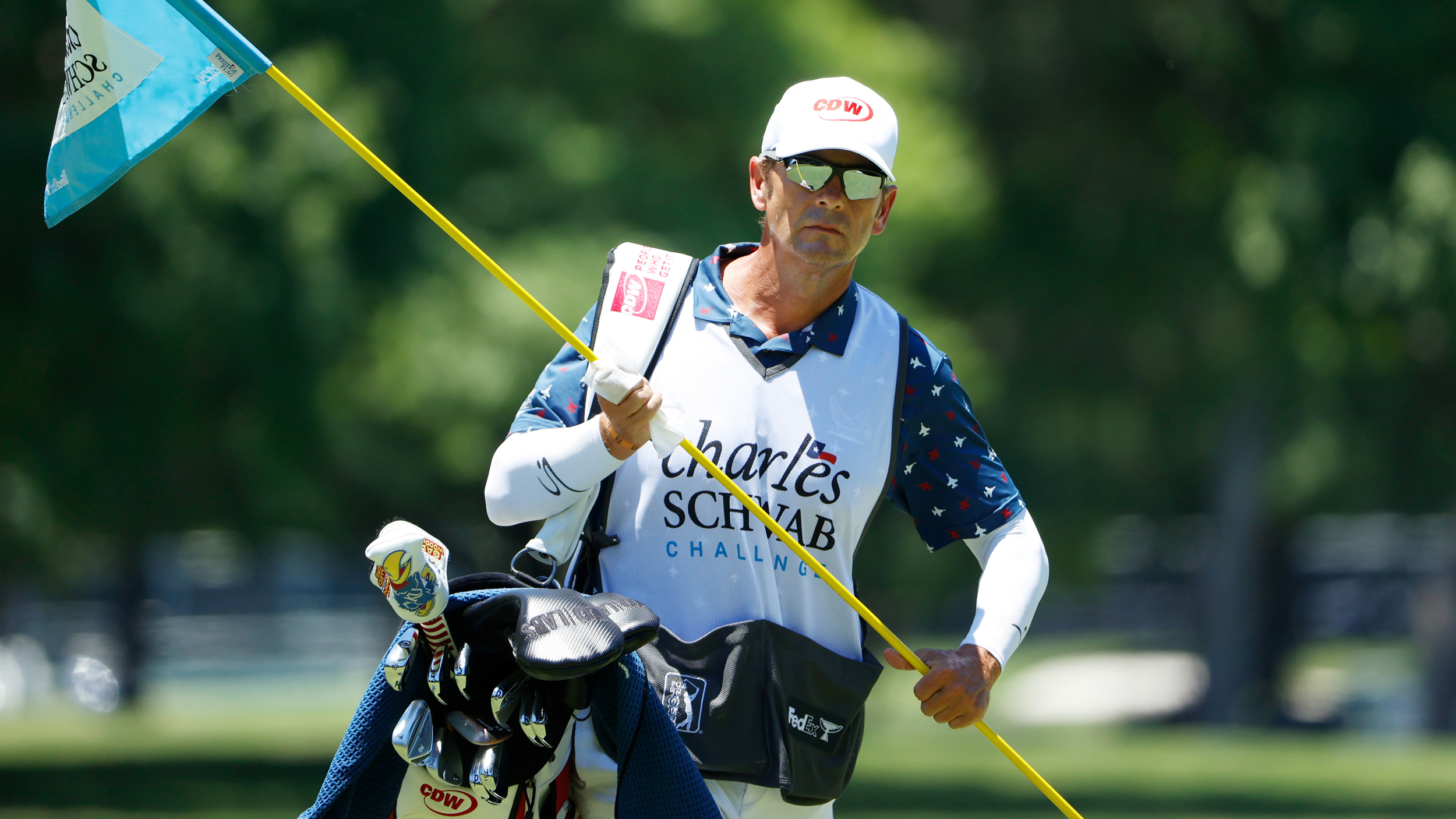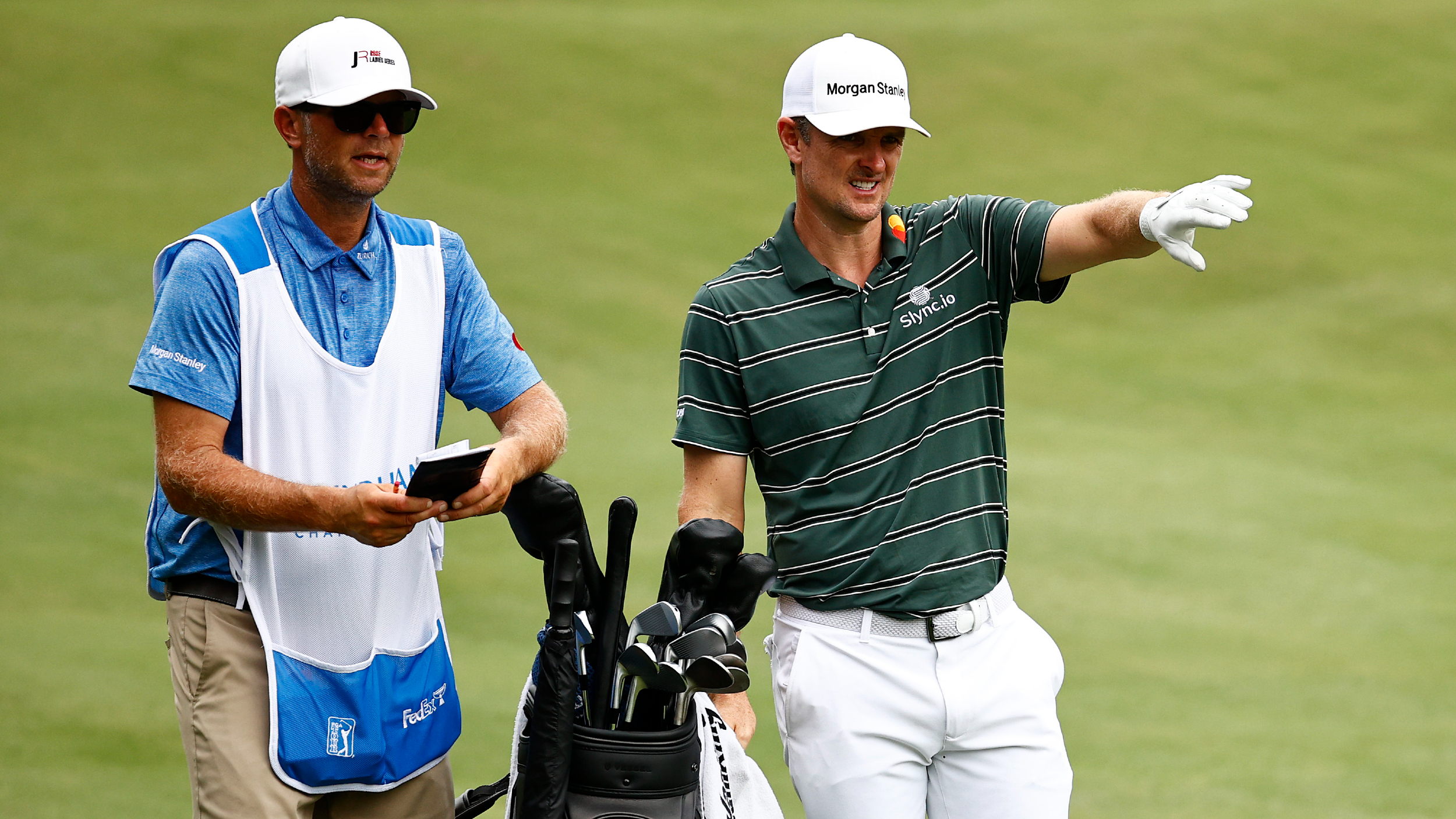How Much Do PGA Tour Caddies Earn?
PGA Tour caddies tend to earn around $2,000 per week plus a percentage of winnings


We’ve seen Jim “Bones’ Mackay, Steve Williams, and Joe LaCava on TV for years looping for golf’s best players. Sometimes they get almost as much air time as the player it seems. But what does a middle of the pack caddie make on the various Tours?
Understandably those on the PGA Tour would figure to make the most based on the large size of the purses, but what kind of range are we talking about?
Well for starters, most pay for their own expenses and have a baseline of what they’ll make at a PGA Tour event that week.
“I think 2,000 a week is pretty average, but everything is worked out between you and the player,” veteran caddie of over 25 years Brennan Little said. “After a few years you’ll get a raise. Or you’ll get bonuses at the end of the year. It just varies by the player. I think generally if you were looking for a number it would be $2,000 a week, and then 7 to 8 percent and 10 percent.”
The latter two figures represent 7 percent of whatever the player earns that week (sometimes it’s 8 percent) and then 10 percent for a win.
“It’s not something that a lot of us discuss often, except for my close friends. I know what they make,” Little said.
But isn’t that what it’s like for us in the real (non-golf) world as well? Discussing our salaries in casual conversations is not something that exactly rolls off the tongue over a pint of beer. Now job security in the caddie world isn’t exactly as solid as other professions most of us may have, so how do these caddies deal with the variables thrown at them? For starters, it’s not easy, but Little shares this advice.
Subscribe to the Golf Monthly newsletter to stay up to date with all the latest tour news, equipment news, reviews, head-to-heads and buyer’s guides from our team of experienced experts.
“I think in this business you’re going to have ups and downs, whether your player goes on a bad streak or whatever it is. But you have to manage your money.”
And that goes as well when your player gets injured.
“If a guy is hurt for a couple of months, if you want to find another job for a couple of weeks I’d say you probably could. Some guys don’t have full-time guys, some players change,” Little said. “Chris Kirk is moving around, there’s different guys moving around. But if a guy you’re working for is out for a year then maybe you can talk to some agents and maybe find something for the rest of the year, but you have to understand you’re going to have some good times and some bad times.”
Those good and bad times happen on the Korn Ferry Tour as well, and veteran looper Michael Bestor (now with PGA Tour’s Kevin Streelman) knows first hand how hard it can be to make a good living caddying on that Tour.

“Usually on the PGA Tour it’s about $50,000 a year in expenses, and on Korn Ferry it’s about cut down in half, $25,000,” Bestor said. “If the player’s making $100,000-200,000 you’re making 7 percent of that. You’re just not making enough money to cover that stuff like hotel, gas, and food.
“There’s so little money in the purses, and you’re there for a week. The scheduling jumps back and forth across the country and many places are expensive too (Bahamas, etc).”
But Bestor advises that if you’re in caddying for the long haul, looking at the big picture and your time as an investment is critical.
“It’s like a growth company in a stock market. I don’t know how many years Amazon went and didn’t make any money. Fifteen years or something, and now it’s one of the biggest companies in the world,” Bestor said. “So you’ve kind of got to look at it that way. You could tell yourself you have a five or ten year plan and I’ve put in my time.”
And then on the LPGA, Bestor estimates based on the size of the purses that caddies make about a fifth of what caddies make on the PGA Tour. That’s a tough road to walk, but there often are other pluses to that Tour which travels massively around the world more than the PGA Tour.
“I know the ladies do it a little bit different because they travel more and they pay more travel expenses to their caddies,” Little said. “They'll pay for flights overseas otherwise you can't travel to Asia all of the time. Whereas here, everyone just gets a salary plus a percentage of what they make. With the purses going up as they are, you're basically getting raises all of the time.
“We’re very fortunate out here.”
David Clark has been caddying for over twenty years and currently for Justin Rose. He’s also got some wages and averages for what caddies are paid on the PGA Tour level.

“I've heard of a few five percentages (on earnings),” Clark says, “It blows me away. I've heard $1,500 a week to be paid to caddies and I don't know how you survive on that sort of money. Nine times out of ten these guys are wanting the yardage books and they're not free. If you're getting paid 1500 then you have to shell out 300 for the the colored picture yardage books. Then you're down to $1,200. That's tough.”
As tough as some of the finances can be at times, Clark doesn’t want to give up being a part of golf’s biggest stages and inside the ropes by taking a “normal” job.
“I don't want any piece of that real world. You see caddies that go away, they come back and you ask how they've been and they say in the real world, you don't want a piece of that,” Clark said.
“So I'm hugely grateful and thankful for this job and what we do. As you know, nothing lasts forever and that's part of the deal with this job, there's no guarantees, there's never a safety net.”
But many of these caddies are in this profession because they just love the game and for former players like Little and Clark, it’s as close as they can get to the big stage outside of teeing it up themselves.
Read more: How to become a PGA Tour caddie

Garrett Johnston is a golf reporter and presenter who’s covered pro golf for 12 years including over 30 majors. His goal each year is always to “grow with the rookies” on Tour. The idea is to get to know the superstars before they become household names. Tony Finau, Gary Woodland, and Patrick Reed are just some of the players Johnston has covered from their early pro careers for their hometown newspapers. Johnston’s favorite event is always The Open, and he credits his unforgettable experience covering the 2015 Open at St. Andrews where he got to interview Tom Watson (in his final Open) and winner Zach Johnson exclusively throughout the week as his favorite event so far. Johnston has also developed a strong rapport with Tour caddies and regularly contributes to Caddie Network and Golf.com. He also has his own podcast: Beyond The Clubhouse